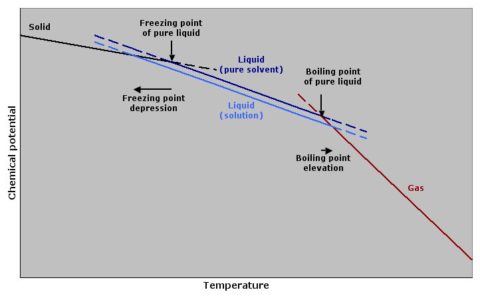 Following on from Monday’s post about health information on twitter, it seemed a nice coincidence that I came across a research paper focusing on healthcare information available in the developing world.
Following on from Monday’s post about health information on twitter, it seemed a nice coincidence that I came across a research paper focusing on healthcare information available in the developing world.
The web is still relatively young and yet many people can barely remember a time when they could not simply click a mouse and gain access to health and medical information. Apparently, hundreds of millions of people regularly access the internet for the sole purpose of finding healthcare information, news about the latest medicines, and advice on every ailment and illness you can imagine and some you can’t.
According to Mahinda Kommalage and Anoj Thabrew, of the Faculty of Medicine at the University of Ruhuna in Sri Lanka, most research into such internet use has focused on health information in developed countries. There have been thousands of scientific papers published on this topic by Western researchers, but a mere handful of results on PubMed cite locations such as Sri Lanka, Nepal, and Bangladesh in keyword searches together with the word “internet”. Moreover, of the six results for “Sri Lanka and Internet”, just one study from 1999 is actually about a health website.
Kommalage and Thabrew suggest that given the enormous growth of Internet usage across the globe almost irrespective of geography, it is quite surprising that so little research into medical and health information sites in developing countries has been carried out. This is particularly worrying given the almost total lack of controls and regulations on medical information on the web.
The researchers have focused on health education websites in Sri Lanka in a survey of what is available. Their first discovery relates to the size of the website most (almost 90%) have fewer than 100 pages, which is barely enough to cover the basics. Moreover, while the quality of local non-commercial sites was higher than those owned by businesses fewer than one in ten provided health education content for the general public.
The notion that the internet might help the developing world improve its health status is not new. As long ago as 2000, the British Medical Journal published an article from WHO scientist Tessa Tan-Torres Edejer entitled “Disseminating health information in developing countries: the role of the internet”. A rare few related papers can be found with a little Googling, including one from Johns Hopkins’ Madhav Goyal and colleagues writing in JAMA who lament the fact that in poor nations invaluable healthcare information rarely reaches those who need it most.
I asked Gabriel Guimaraes a Physician at ASEFE in Brazil about the issue and he points out that the internet does reduce the differences. “This question has so many possible answers,” she says, “We could either talk about the evidence based medicine and everything related to it (MedLine, NCBI and Cochrane’s Metanalysis), which in Latin America would also relate to SCIELO database, or health record software which would relate for example to Health Informatics Societies (like SBIS), or about telemedicine. Anyway there is not much difference between developing and developed because we are talking about recent technology which has almost simultaneously started for every country.”
But, his conclusions do not bear up to the scrutiny of Kommalage and Thabrew, at least for Sri Lanka.
“The total number of websites has not increased compared to the increase in internet usage in Sri Lanka during the last few years,” the researchers say. If their findings apply to the wider developing world then the internet represents a massively underutilised health education resource in parts of the world where improved health education could be used to reduce significantly the incidence of many lethal diseases, such as malaria, HIV/AIDS, and parasitic infections.
For anyone interested in what is being done to redress the balance, check out antropologi.info blog and Health Information for all 2015. The raison d’être is the following fact:
Tens of thousands of people die every day, often for the simple reason that the parent, carer or health worker lacks the information and knowledge they need to save them.
Somewhat related to this post but more about scientific research than information is SciDev.net. Also of interest: Uneca, science with Africa.
![]() Mahinda Kommalage, Anoj Thabrew (2008). The use of websites for disseminating health information in developing countries: an experience from Sri Lanka Int. J. Electronic Healthcare, 4 (3/4), 327-338
Mahinda Kommalage, Anoj Thabrew (2008). The use of websites for disseminating health information in developing countries: an experience from Sri Lanka Int. J. Electronic Healthcare, 4 (3/4), 327-338
 My good friend Jo Brodie who works at DiabetesUK and twitters as
My good friend Jo Brodie who works at DiabetesUK and twitters as 
 My latest science news updates are now available on SpectroscopyNOW.com and ChemWeb.com, covering a wide range topics from date rape drug analysis to DNA that behaves parasitically and could underpin speciation and evolution:
My latest science news updates are now available on SpectroscopyNOW.com and ChemWeb.com, covering a wide range topics from date rape drug analysis to DNA that behaves parasitically and could underpin speciation and evolution: This morning, my kids are listening eagerly to the local radio to hear if their school will be closed? Why? Because we’re in England, a few millimetres of snow has fallen, it’s a little chilly, and the nation is in chaos. Airports are shut, driving conditions are almost impossible, and schools are closing across the country. The radio meteorologists are telling us it’s the worst snow “event” since the early 1990s, although it was worse almost exactly twenty years ago as I seem to recall tramping to work in snow when I first moved to Cambridge.
This morning, my kids are listening eagerly to the local radio to hear if their school will be closed? Why? Because we’re in England, a few millimetres of snow has fallen, it’s a little chilly, and the nation is in chaos. Airports are shut, driving conditions are almost impossible, and schools are closing across the country. The radio meteorologists are telling us it’s the worst snow “event” since the early 1990s, although it was worse almost exactly twenty years ago as I seem to recall tramping to work in snow when I first moved to Cambridge.